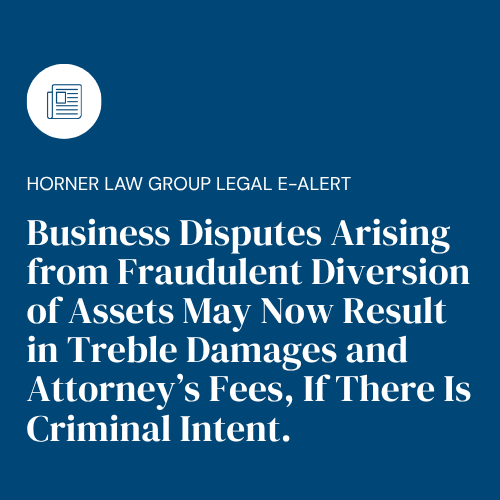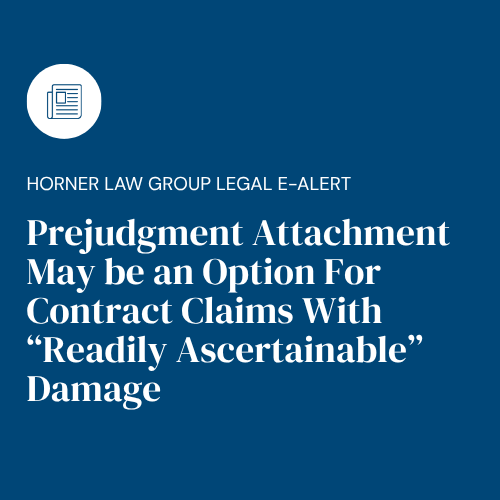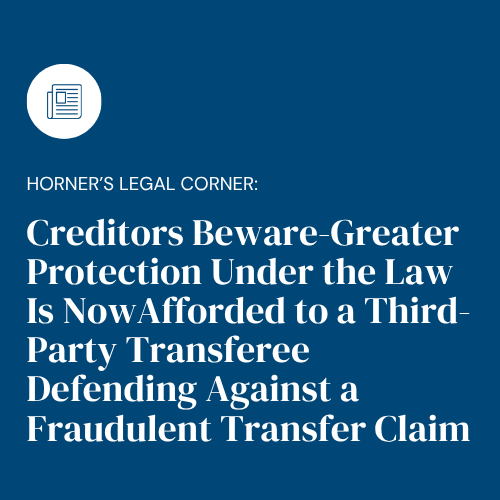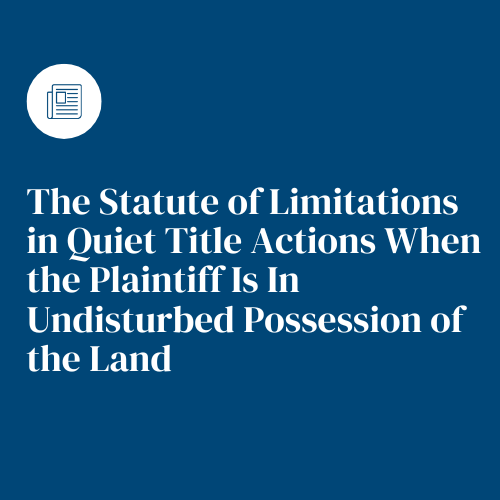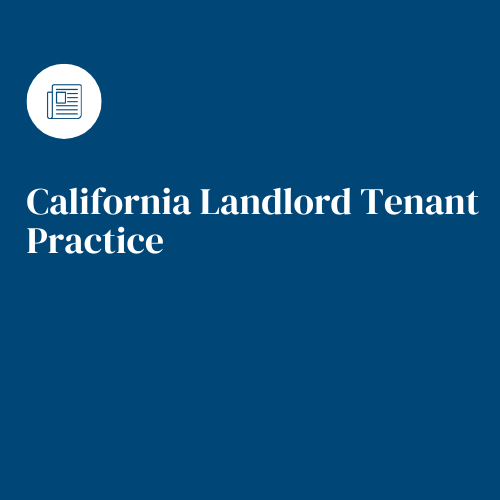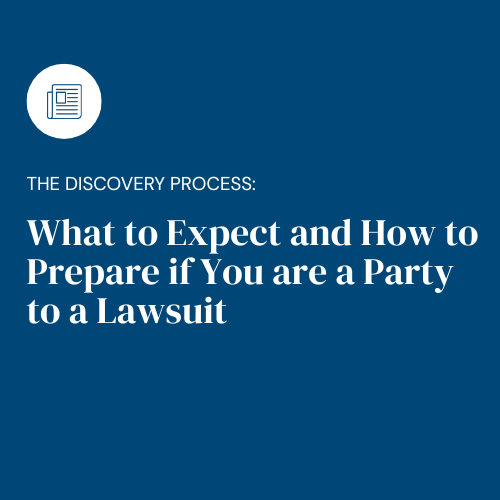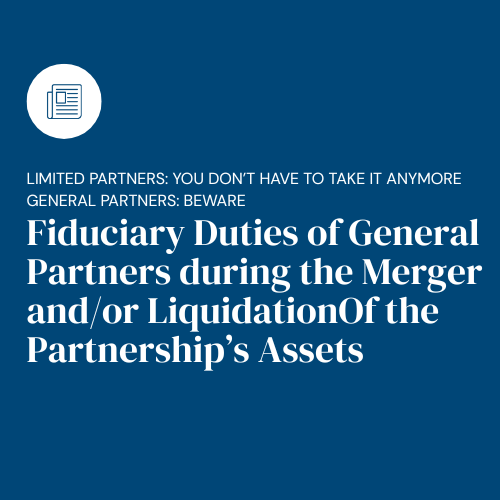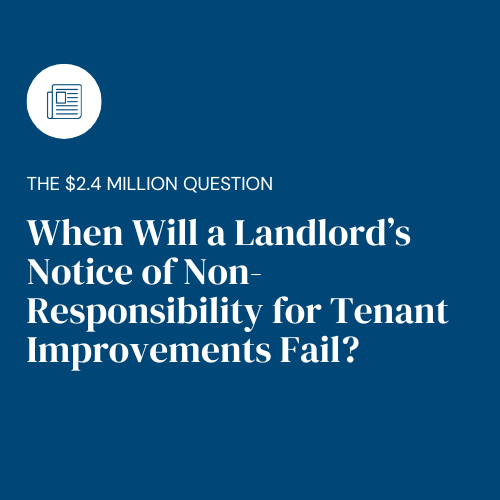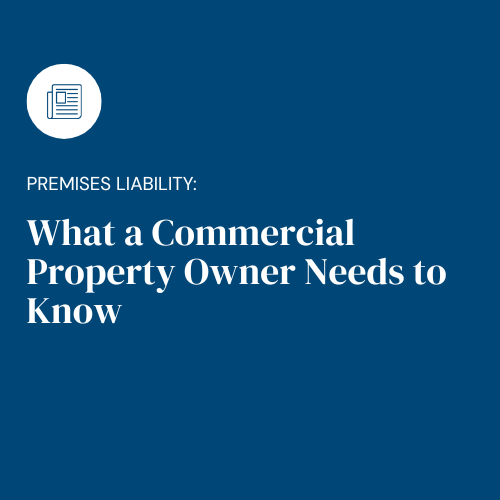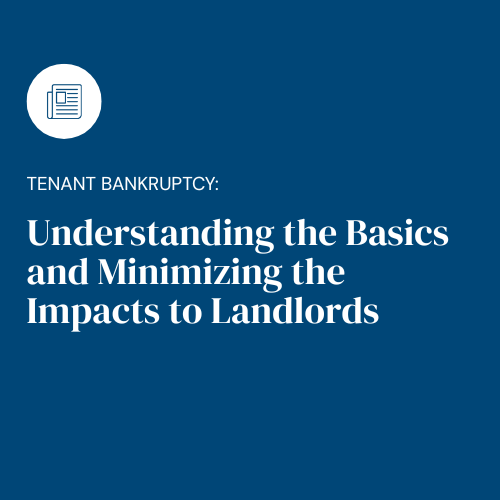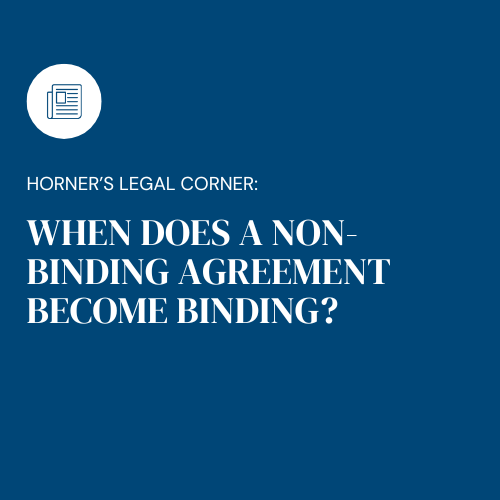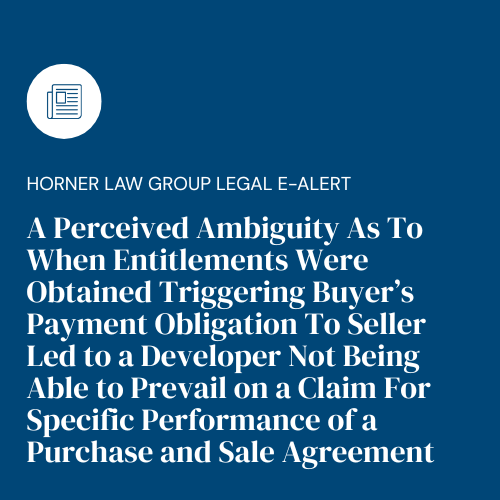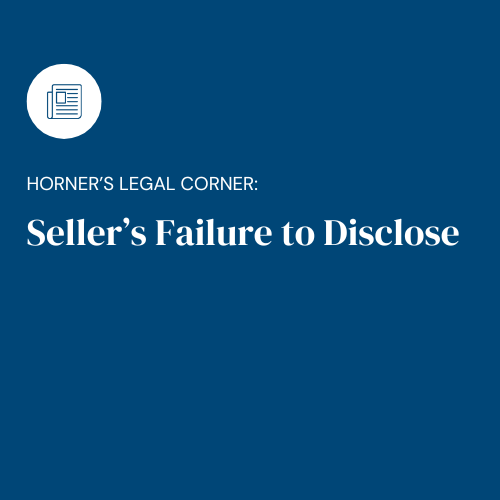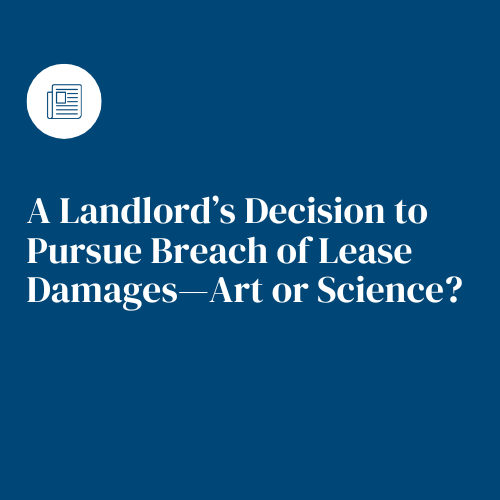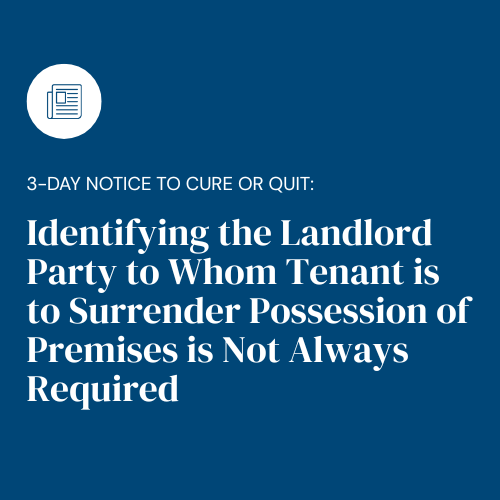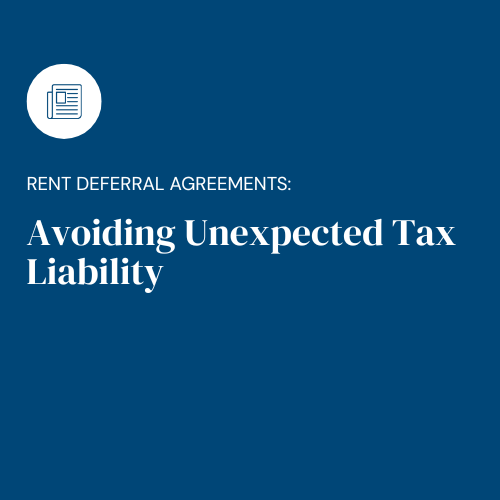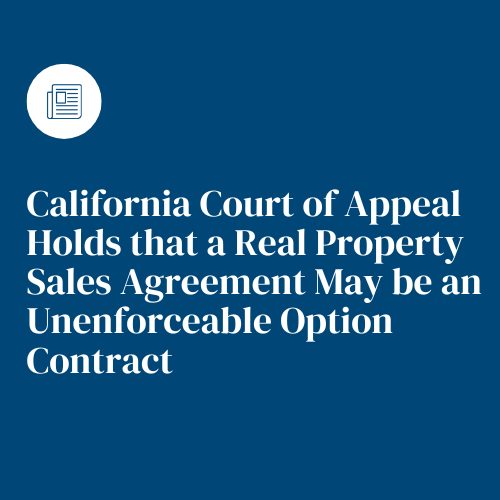When Will a Landlord's Notice of Non-Responsibility for Tenant Improvements Fail?:
The $2.4 Million Question
Author: Clifford R. Horner & Daniel Rottinghaus
Commercial Landlords often expressly agree in the Lease to allow their Tenants to construct substantial improvements to their leased property. Landlords then commonly post and record a Notice of Non-responsibility to shield themselves from liability from the Tenant's contractor if the Tenant fails to pay for the improvements. However, are these notices adequate to shield a Landlord from the contractor's mechanic's lien and foreclosure action if the Tenant fails to pay? Probably not, according to a recent Court of Appeal decision in the First District of California (which includes all Bay Area counties).
It has been a longstanding rule under California's "participating owner doctrine" that mechanics, materialmen, contractors and the like have an automatic lien on property upon which they have bestowed labor or furnished material as long as the work was done "at the instance of the owner" or the owner's agent. (See Cal. Const., Art. XIV, § 3; Civil Code § 3110.) When a Tenant orders work to be performed on leased premises with the owner's knowledge, the work is deemed to be "at the instance of the owner" unless the owner serves a Notice of Non-responsibility under Civil Code § 3129. However, a Notice of Non-responsibility is of no effect when the Landlord "caused the work of improvement to be performed." (Civil Code § 3094.) This is the "participating owner" doctrine, which provides a key exception to the effectiveness of a Landlord's serving and recording of a Notice of Non-Responsibility.
The "participating owner" doctrine has a long history. A majority of states have adopted the general rule that the installation of leasehold improvements by a Tenant cannot subject the Landlord's ownership interest to mechanic's lien liability if the Landlord provides notice of his non-responsibility. In California, however, the Courts have created the "participating owner" exception to this rule whereby the Landlord's notice is deemed ineffective if the owner is a "participant" in the work of improvement. The owner is found to be a participant and a "participating owner" generally in the following scenarios:
When the terms of the Lease impose a mandatory duty upon the Tenant to make improvements to existing structures the owner is deemed to have "caused the work to be performed." (See e.g., Baker v. Hubbard (1980) 101 Cal. App. 3d 226; Ott Hardware Co. v. Yost (1945) 69 Cal. App. 2d 593.)
When the owner plays an active role in the installation of the improvements (e.g., when the owner retains control and/or approval over the plans, specifications, mode, timing, and method of the construction of the improvements). (See Ott, supra.)
When the owner has an ongoing interest in the continuing operation of the Tenant's business, i.e., through a percentage rental agreement. (See Los Banos Gravel Co. v. Freeman (1976) 58 Cal. App. 3d 785.)
What seems to be rapidly changing and expanding are the circumstances which give rise to an owner being deemed to have "caused the work to be performed." As set forth in the first bullet point above, it has been the rule in California for years that the Tenant may be treated as an agent of the Landlord (so that the Landlord is deemed to have "caused the work to be performed" under the participating owner doctrine) when the Tenant is required by the Lease to make the improvements. (Ott Hardware Co. v. Yost (1945) 69 Cal. App. 2d 593, 597-599.) On the other hand, when the improvements are optional with the Tenant, the Notice of Non-responsibility has historically been effective to relieve the Landlord from mechanics' lien liability (and the lien would then attach only to the Tenant's improvements and the Tenant's leasehold interest). (English v. Olympic Auditorium, Inc. (1933) 217 Cal. 631, 642-643.)
In Howard S. Wright Construction Co. v. Superior Court (BBIC Investors, LLC) 106 Cal. App. 4th 314 (February 14, 2003), however, the Court expanded this doctrine to the extreme detriment of Landlords. In Howard S. Wright, prior to the Lease between the Landlord, BBIC, and its Tenant, 360networks, a startup telecommunications company, the premises consisted of a warehouse. The "initial alterations" identified in the Lease included bringing telecom cabling to the building, increasing the electrical supply, and adding more air-conditioning and a back-up generator. The Lease required 360networks to obtain BBIC's approval of the plans and specifications for the work. BBIC also met regularly with the contractor, insisted on certain (minor) modifications to the work, and BBIC collected a $5,000 per month administrative fee for "overseeing the construction." Several months into the work of improvement, 360networks filed for bankruptcy. The contractor pursued BBIC for payment for this work. Because of BBIC's Lease Terms and oversight of the improvement work, the Court found the Landlord's properly recorded and served Notice of Non-Responsibility ineffective against the insolvent Tenant's contractor's $2.4 million claim for the recovery of payment for its TI work.
As noted by the Court, commercial Landlords who become involved in controlling the timing and scope of construction work by their Tenants act at their peril with respect to the "participating owner" doctrine. The Court was unconcerned that the improvements were never completed, leaving BBIC with a partially-renovated space, and that BBIC then incurred the added expense of demolishing some of the work and completing other parts to make the space tenantable. As stated by the Court, "Those post-hoc events . . . are irrelevant to an analysis of the participating owner doctrine. Our focus must be confined to the parties' intentions at the time the improvements were undertaken."
What is most alarming about the Howard S. Wright decision for Commercial Landlords is that the Howard S. Wright Court also found the fact that the Lease did not require the improvements unpersuasive. The Court held that the determinative question was whether "the improvements were a practical necessity for the contemplated use of the premises." With this holding, the Howard S. Wright Court arguably expanded the "participating owner doctrine" ad infinitum. The Court arguably exposed every Landlord in the state of California to mechanic's lien liability to its Tenant's contractor, regardless of whether the Landlord served and recorded a Notice of Non-responsibility, regardless of whether or not the work was required in the Lease, and regardless of whether the owner controlled the timing and scope of the work, because in practical terms every Tenant's TI's are a "practical necessity" for the conduct of its business. It is difficult if not impossible to imagine any Tenant other than a simple warehouseman that can do business in a vanilla shell. The Court could have found in favor of the contractor in the Wright case without infinitely expanding the scope of the liability owed by every Landlord to every one of its Tenant's contractors, but did not.
The question now for commercial property owners is: How do they now protect themselves against their Tenant's contractor's claims? Because a contractor's waiver of its subcontractor's constitutional mechanic's lien rights are unenforceable (Civil Code § 3262 (a)), the owner is left with limited choices, which include:
Require all persons (e.g., Tenants) contracting for work to be performed on the Premises to obtain a surety payment bond in favor of the Landlord in case of non-payment from the Tenant to the contractor (note that this will also likely add from 0.5 to 2% to the TI contract price);
Require that the Tenant use a contractor chosen by the Landlord, or the Landlord will perform the construction itself (i.e., through its own contractor);
Require that the Tenant pre-pay the entire TI contract amount to the Landlord, including the Landlord's management fee, to ensure that the Landlord has funds sufficient to pay the contractor at the conclusion of the work;
Ensure that a sufficient third party guarantee is in place which attaches to all obligations of the Tenant related to the Lease and the Premises, specifically inclusive of all mechanic's lien obligations which may be asserted against the Landlord for third parties' works of improvement performed on or at the Premises;
Require the general contractor to waive or release all claims against the Landlord for any non-payment to him by the Tenant (See e.g., Santa Clara Land Title Co. v. Nowack & Assoc. (1991) 226 Cal. App. 3d 1558, 1568); and/or
Require that the Tenant include in all construction contracts for the Premises that all contractors, subcontractors and materialmen provide lien waivers and releases under Civil Code § 3262 to the extent payments are made to them and ensure that the Landlord is copied on all invoices, payments, and lien releases. The Tenant's later failure to require and obtain these releases on a regularly scheduled basis (e.g., monthly) would then constitute a breach of the Lease and a cause for eviction and stoppage of the work.
Include a provision in the Lease and in a side agreement with the general contractor that the Tenant and contractor cannot accumulate debt from the Tenant to the contractor of more than one-half of an amount set aside in the Landlord's account as collateral for the debt.
With the current demise of the ability of a Notice of Non-responsibility to act as protection for a Landlord from a claim from an unpaid Tenant's contractor, the knowledgeable and cautious building owner must take extra and indeed extraordinary measures, over and above serving and recording a Notice of Non-Responsibility, to protect itself from its Tenant's contractor's, subcontractor's, and materialmen's claims.
Subscribe to Horner Law Group Mailing Lists
Get the latest significant legal alerts, news, webinars, and insights that affect your industry.

